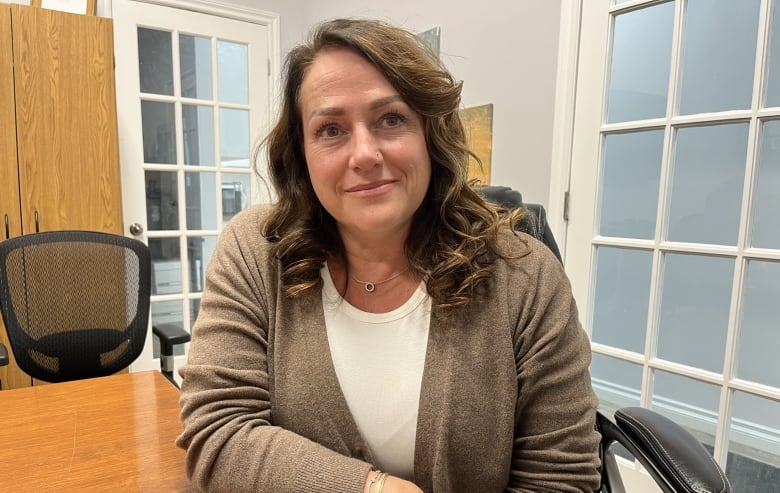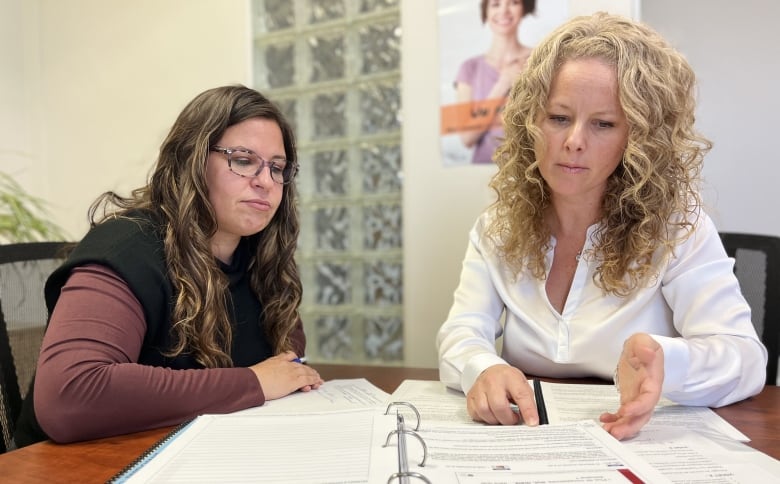
Gabrielle Giroux says she was a 14-year-old girl shopping in an Outaouais mall when she met the man who sold her to human traffickers.
Over the course of the next five years, the man used grooming tactics to build up a rapport of trust and affection. When she was 19, he sold her into a network of exploitation — one where she was beaten, raped and made to have sex for money.
“There were no alarm bells in my head. … Nothing sexual, it seemed fine,” Giroux, now 27, told Radio-Canada in a French-language interview. “The process started insidiously with piercings, little gifts, listening and advice. Comments like, ‘you’re mature for your age.”
He suggested she start working in a strip club. One night when she told him she wanted to stop, she said, he locked her in a basement.
“He sold me … I didn’t see the sale, but I learned I was sold for $15,000. I became their possession from that moment,” Giroux said.
Giroux said she had to bring back $1,000 a day, working at motels in the Outaouais, but also in other locations in Quebec and Ontario.
Challenges in policing
Her story reflects broader trends with human and sex trafficking in the National Capital Region, where multiple jurisdictions can present challenges in policing the crimes.
According to Statistics Canada, one in 10 police-reported human trafficking incidents in Canada between 2010 and 2020 happened in Ottawa — second only to Toronto.
Gatineau police say the number of investigations related to human trafficking has doubled over the last two years. Ottawa police did not provide updated statistics by CBC/Radio-Canada’s deadline.
Julia Drydyk, executive director at the Canadian Centre to End Human Trafficking, said the centre’s survivor hotline gets most of its calls from Ontario and people who have been moved along the Highway 401 corridor between Montreal and Windsor.
“Police-reported data is the tip of the iceberg. The vast majority of the victims and survivors that we work with have a lot of reasons to be hesitant about engaging with law enforcement,” Drydyk said.
Affluent clientele, vulnerable populations
Wendy Gee, executive director of the A New Day Youth and Adult Services, said the presence of tourists, diplomats, the federal government and two universities creates a level of affluence where there’s disposable income to pay for sex.
“They can be anyone,” Gee said.
Gee said her crisis shelter has four beds and has a steady wait-list of five to 10 youth with constant new referrals. She said she has had a referral for a child as young as 12 within the last six months.

Gee said, as a main location for services for Indigenous people from remote and northern communities, Ottawa also brings potentially vulnerable people to the region. According to the Ministry of Public Safety, half of human trafficking victims in Canada are Indigenous women, while they only represent four per cent of the overall population.
“We are on that corridor coming from the North to the South plus we’re on the corridor, the 401, which is very busy,” Gee said.
Interprovincial issue
Isabelle Roy, co-ordinator with the Director of Youth Protection for the Outaouais, said trafficking between Ottawa and Gatineau is of particular concern.
“Children and adolescents can cross the border on foot. We have a legal issue in our two provinces, the law is different,” Roy said in French.
Roy said her office can intervene in Quebec until 18 years of age, but child protection services stop at 16 in Ontario.

Gatineau police Insp. Mathieu Guilbeault leads the Équipe intégrée à la lutte au proxénétisme-Ouest. His team works with the Ottawa Police Service, the OPP and several municipal police services in Quebec.
“Even if we maximize our resources, even if we have dedicated teams, we can’t make it alone. For that, it’s important to establish a good network with our partners,” Guibeault said in French.
Drydyk said traffickers have a history of moving between municipalities where police forces tend not to communicate with one another.
She said Quebec has led the way on developing trauma-informed police units that can co-ordinate across jurisdictions. Ontario now has a similar unit, but Drydyk said there’s more work to be done across the country and between provinces
‘If I die, I die’
When Giroux figured out her traffickers were sending her to Calgary, she decided to escape. She made her move on the way to the airport.
“I threw myself from the back of the van. Again, I was in a very public place, nobody did anything. I told myself in that moment: if I die, I die,” Giroux said.
“I hit the ground with my eyes closed … Then I got up and ran without ever looking back.”
Giroux said authorities didn’t believe her the first time she reported her traffickers. An investigator only knocked on her door years later, after Guilbeault’s group was established, while following up on complaints from other victims who had identified the same traffickers, she said.

Giroux said the charges took four years to wind through the legal system.
According to Statistics Canada, legal cases related to human trafficking take more than twice as long as cases involving violent crime — an average of 373 days compared to 176.
Giroux wants to warn young people of the risks and realities of human trafficking.
“If I’d been told the truth about things when I was young, when my brain was ready to accept that kind of information, I’m pretty sure I would have been aware. And maybe it could’ve been prevented,” she said.












